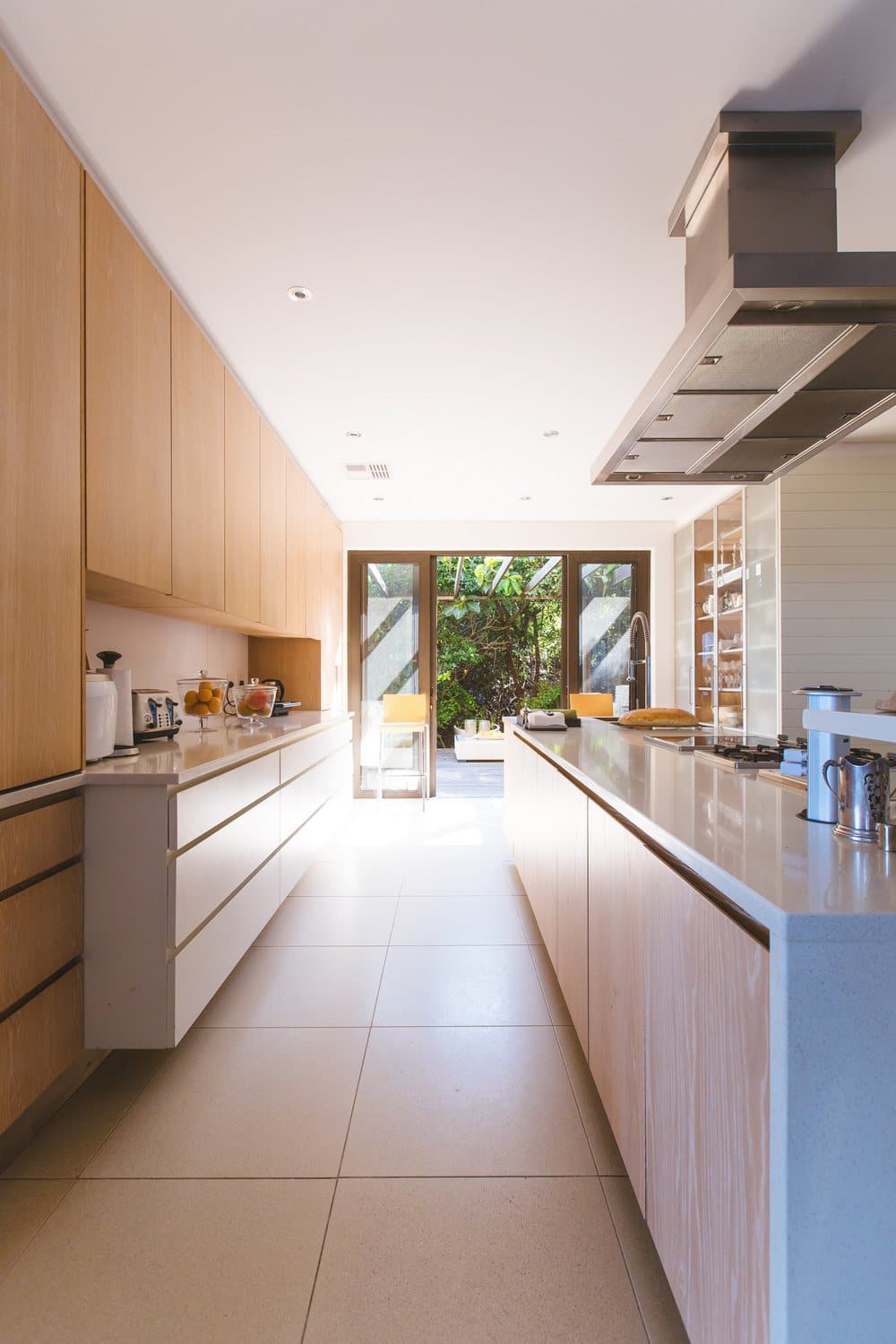
Sustainability is one of the leading trends in interior design, with top designers such as Laura Hodges, Chenault James, and Oliver Health focusing on improving human health and wellbeing at home while producing a low or zero net carbon impact. When it comes to kitchens, a third value comes into the equation: optimal functionality. If your kitchen is up for renovation soon and you’d like to design your new space with green values in mind, take note of the following trends.
Reclaimed Materials
The use of reclaimed materials has risen vertiginously in popularity when it comes to remodeling and there are numerous ways to incorporate once-unwanted materials into redesigned home spaces. In the kitchen, top trends include using reclaimed wood as the main material for kitchen islands, the use of floating shelves made of reclaimed wood slabs, the incorporation of vintage rustic sinks to add an eclectic touch to an otherwise modern kitchen, and the election of reclaimed wood for flooring. Smaller pieces such as drawer handles and doorknobs can also be used to add panache to your kitchen without having to make a major investment.
Recycled or Resold Fixtures
If you cannot find the pieces you need in reclaimed materials, consider purchasing newly recycled fixtures such as steel countertops and islands. You might also consider companies that specialize in ex-display and used designer kitchens. These companies sell everything from entire kitchens (worktops and appliances) right through to individual fixtures such as worktops, cookers, and islands.

Energy Star Equipment
When fitting your kitchen out, aim to invest in equipment with an Energy Star rating. The latter guarantees that equipment uses less water, switches to low power mode during long idle periods, and requires less energy to work efficiently. Stylistic features also make a difference. For instance, front load washers save more water than traditional top load models (13 gallons of water per load compared to 30 to 45 gallons per load, respectively). Front loaders are also greener because they have increased energy efficiency and they allow for more customization in loads. They can be more expensive at the outset but they will save you money in the long run.
Zero VOC Content Furniture
The Environmental Protection Agency (EPA) has warned that the indoor air quality in many American homes is two to five times worse than the air outside. This can be attributed in no small part to VOCs (volatile organic compounds), emitted by (among other things) pressed wood furniture. These compounds include formaldehyde, which can cause skin and eye irritations, as well as respiratory problems. Some companies (such as Bertolini, IMD, and Faclior) fabricate stainless steel cabinets that are totally VOC-free. Solid wood and formaldehyde-free plywood are two choices that are also popular among homeowners seeking to improve their indoor air quality.

Sustainable Kitchen Lighting
Modern kitchens usually have various types of lighting—including accent lighting (think three hanging lights above your central island), under-cabinet lighting, and ambient lighting. The first consideration to keep in mind when it comes to lighting up your kitchen is to allow as much natural light as possible to flood the room to create a bright, modern ambience. You can achieve this by enlarging windows, building a skylight, or (if your kitchen is adjacent to the garden) knocking down walls and replacing them with sliding glass doors. Food task and mood lighting, rely on LED lights, which use at least 75% less energy and last up to 25 times longer than traditional lighting.
Sustainability is all the rage in home architecture and design. To ensure your kitchen is as eco-friendly as possible, consider using reclaimed and recycled materials for fixtures and flooring. Also, make it a point to invest in sustainable equipment and furniture that will help keep your indoor air quality pure.









